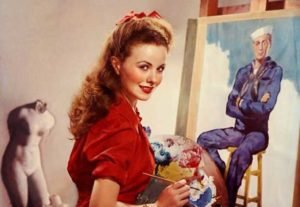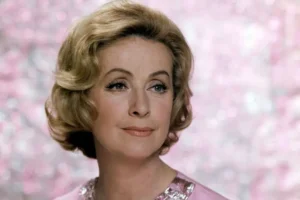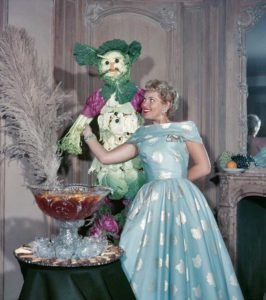Charlie Chaplin: The Enduring Legacy of the Tramp
Explore the life and unparalleled career of Charlie Chaplin, the silent film legend and creator

Charles Spencer Chaplin was born on April 16, 1889, in London, to Hannah Harriet Pedlingham Hill (also known as Hannah Chaplin or Lily Harley) and Charles Chaplin Sr., both music hall entertainers. When Charlie was just a baby, his father abandoned the family to live with another woman. His mother began to suffer from nervous depression, partly due to a family history of mental illness and partly from the severe poverty they endured. Hannah also had two other sons, Sydney and Wheeler (George Wheeler Dryden).
Rumors persist that Charles was born in France, with Chaplin himself sometimes affirming this in conversations, though no reliable sources confirm it. There are also whispers that Charles was not the biological son of Charles Chaplin Sr. One reason for this speculation is young Charlie’s appearance: his father was tall and strong, while Charlie was small with large blue eyes. This, too, remains an unsubstantiated rumor.
Charlie made his stage debut at the tender age of five, stepping in for his ailing mother in a musical. From that point, Hannah’s condition worsened, and the boys were eventually placed in different orphanages due to their age difference. Charlie, prone to depressive tendencies from childhood, suffered deeply from the separation from his mother and brother. For a period, Charlie was sent to live with his father, stepmother, and a half-brother. As his father and stepmother were heavy drinkers, and his stepmother would attempt to hit him when drunk, he began sleeping in the streets until his brother Sydney returned home.
It was Charles Chaplin Sr. who secured an audition for Charlie with the “Eight Lancashire Lads” dance troupe. In 1901, Charles Chaplin Sr. died from cirrhosis. Hannah, who had partially recovered, arranged his burial with the help of theater colleagues who still respected the former star.
Chaplin tried various odd jobs before finding his calling. He was a boat seller, a flower seller, a glass blower (fainting on his first breath), a shop assistant (fired after figuring out how to get free chewing gum from the machine), and a butler (the job he enjoyed the most).
He earned some money performing as a young cockney in the play Sherlock Holmes. Later, he was hired by Casey’s Circus, where he learned comedic tricks that he would use throughout his life. Sydney, who was also pursuing an acting career, secured a role with Fred Karno’s Company, considered the king of London Music Hall. After much persistence, Sydney arranged an audition for Charles, who was hired by Fred Karno with some reluctance.
In 1909, Chaplin made his first international trip to Paris. After initially being given mediocre roles, he gradually won over his colleagues and seized an opportunity to portray a drunkard. It was a resounding success. The following year, he embarked on a tour of London.
Soon, he became the company’s leading actor, all thanks to his drunkard character. Every penny he earned, he saved to buy a farm. While on tour in the United States, two years later, he received a telegram from Mack Sennett, owner of Keystone Studios, who wished to meet him.
After a three-day panic attack, he finally showed up for his screen test. His first salary at Keystone was $150 a week. Keystone almost monopolized comedy cinema at the time. Ford Sterling was the main star and was becoming increasingly demanding. Because of this, Mack Sennett was looking for a star who could unseat him at the box office and, consequently, within the company. Sennett wasn’t fully familiar with Chaplin’s work, but, as fate would have it, Chaplin was in the right place at the right time and was hired. There, Chaplin met stars like Ford Sterling (who initially looked down on him), Roscoe Arbuckle, with whom he would partner in some shorts, and Mabel Normand, who co-starred with him in most of his films during this period.
In February 1914, his first film for Keystone, “Making a Living,” premiered. In this film, he appeared as a villain. In his second film, “Kid Auto Races at Venice,” a character emerged that the public would come to identify with. According to Chaplin:
“I thought I would wear some very baggy pants and enormous shoes, plus a cane and a bowler hat. I wanted everything to be contradictory: baggy pants, tight jacket, small hat, and enormous shoes. I didn’t know whether I should look old or young, but when I remembered that Sennett had thought I was much older, I put on a small mustache that would give me a few years without hiding my expression.”
Of course, it wasn’t that easy. He borrowed the pants from Arbuckle, the hat from another, and the old shoes and tight jacket from different people to create the contrast. Thus, the Tramp (known as Carlitos in Brazil) was born.
Chaplin made 35 short films that year, a grueling pace that left him exhausted. By 1915, his luck had turned, and the success of his character captivated audiences, drawing the attention of other producers. Essanay Studios, owned by G.M. Anderson (the famous “Bronco Billy”), signed him to a lucrative contract: a $10,000 bonus and $1,250 per week. He also had the right to choose his own team. He brought along Edna Purviance (his leading lady), Charlotte Mineau, and Leo White. Behind the cameras was Rollie Totheroh, who would accompany him throughout his career in the United States. Chaplin trusted Rollie as a second pair of eyes. At Essanay, Chaplin gained more creative freedom and could finally direct his own films, where he began to develop his distinctive filmmaking techniques.
In 1916, Mutual Film Corporation sought him out, offering a contract that included $10,000 weekly and a $150,000 bonus in exchange for 12 short films. It was at Mutual that some of his first masterpieces emerged. Eric Campbell, Henry Bergman (who would greatly assist him in creation), Albert Austin, Leo White, and Edna Purviance were called to join him, resulting in films like “The Fireman,” “The Vagabond,” “Easy Street,” and “The Immigrant,” among others. From this period, Campbell stood out, creating the popular contrast between the tall, strong villain and the small, weak Tramp. They formed, even before Laurel and Hardy, the first successful comedy duo of contrasts.
By 1917, already hugely famous, the actor participated in the campaign to sell War Bonds during World War I. Alongside Douglas Fairbanks and Mary Pickford, he traveled the country selling the bonds.
Upon the expiration of his contract with Mutual, Charles did not renew. He moved to First National Pictures, where he would make eight more films between 1918 and 1921. At the new company, which was primarily a production outfit, he was also able to develop in this area, fully promoting his films. From the films made at First National, he was able to own his negatives. Eric Campbell had died in a car accident, and the villain’s position needed a replacement. Mack Swain was hired. Chaplin’s brothers were also called to work with him, and Syd even starred in some films. Films from this period include “A Dog’s Life” (1918) and “The Kid” (1921). But he, Mary Pickford, and Douglas Fairbanks all wanted more control over their work.
United Artists was initially known as “The Big Four,” inspired, of course, by its four founders: Mary Pickford, Douglas Fairbanks, Charles Chaplin, and director D. W. Griffith. William S. Hart was also an early participant. Receiving help from professionals who came from competitors, United Artists gradually began to gain commercial ground. In truth, Charles’s participation in the company was largely symbolic; he rarely attended meetings, and his partners grew frustrated as they had all starred in films for the new company, but he had not. In 1923, he delivered the film “A Woman of Paris” (also known as A Woman of Paris: A Drama of Fate), starring Edna Purviance. The film was a critical success, but the public didn’t want to see a Chaplin film without Chaplin. It became his first commercial failure.
Two years later, “The Gold Rush” (1925) was released, considered by many to be his greatest work. However, the executives at United Artists were still not satisfied; a single film every two years was not enough for the company to thrive. He argued that he was an artist and depended on inspiration, but his arguments held little sway. His already complicated friendship with Mary Pickford (the two constantly bickered) became unbearable, and they stopped speaking.
In 1927, Joseph M. Schenck took over as president of United Artists. The following year, filming began on “City Lights” (1931). The advent of sound cinema was in full swing, but Chaplin vehemently opposed it, believing that the Tramp character could not speak. The filming was interrupted for a long time, and he reacted with bouts of depression and a lack of creativity.
In an interview with Motion Picture Herald magazine, he declared: “I hate talkies. They have come to destroy the oldest art in the world, the art of mime. They are tearing down the current edifice of cinema. Plastic beauty remains the most important thing in cinema. Cinema is a pictorial art.”
For “City Lights,” instead of dialogue, he decided to compose a full musical score, famously based on “La Violetera.” Being radical to the extreme, spoken dialogue only makes a brief appearance at the very beginning of the film, during the mayor’s speech. But, defying all expectations, the film filled theaters and played for over two consecutive weeks, becoming his greatest financial success.
During this period, he returned to Europe, where he met many influential figures. By this time, he could travel freely without invitation and even decline visits from royalty. He met Winston Churchill, Mahatma Gandhi, John Maynard Keynes, George Bernard Shaw, H.G. Wells, Aristide Briand, the Countess de Noailles, Albert Einstein, and more.
In Europe, he continued to make statements that newspapers published, making his ideas on humanity and life widely known. At this stage, he even considered living as a writer of social commentary. But while the subject fascinated him, it also left him profoundly depressed.
Once, Somerset Maugham said of Chaplin’s work: “I have the impression that he misses the suburbs (…). I think he remembers, with nostalgia, the freedom of his difficult youth, with poverty and bitter privations, and knows that he will never be satisfied.” This couldn’t have been more wrong for Chaplin. He used to say that he didn’t know a poor person who, having become rich, missed the days of hunger.
In the 1930s, the filmmaker began his next work: “Modern Times” (1936), a scathing critique of mechanization and how machines increasingly displaced human labor. It was a gag from this film (where the Tramp, seeing a red flag fall, begins to wave it and is mistaken for a communist agitator) that first placed his name on a list of personae non gratae in the U.S. “The Great Dictator” (1940) further embarrassed Americans by openly criticizing Adolf Hitler during a time when the U.S. aimed for neutrality regarding the war. President Franklin D. Roosevelt even received Charles at the White House, reportedly telling him: “Sit down, Charlie, your film is giving us a lot of headaches.”
The actor began to be labeled a communist, included on the list of “hostile personalities” by the House Un-American Activities Committee (HUAC). He was associated with the infamous “Hollywood Ten.” In reality, he self-identified as a humanist. The situation became untenable. Every word he spoke was scrutinized, and every film scene analyzed before release. He famously declared:
“For your convenience, I will tell you what I think you wish to know. I am not a Communist. I have never belonged to any political party or organization in my life. I am what you call a peace monger. I hope you won’t be offended by that.”
Lack of patriotism, communist sympathies, and suspicions of adultery were among the accusations leveled against him. In 1952, he departed on the Queen Elizabeth with his wife Oona and their children, bound for London. During the voyage, he received the news that he would not be allowed to re-enter the United States. Oona renounced her American citizenship, and Chaplin returned his re-entry visa, stating he was “too old for such nonsense.” In Europe, he directed two more films: “A King in New York” (1957), a satire of the country that had expelled him, and “A Countess from Hong Kong” (1967), which he directed starring Sophia Loren and Marlon Brando.
He lived in Vevey, Switzerland, where he had more children. In 1972, he received an honorary Academy Award from the Academy of Motion Picture Arts and Sciences “for the incalculable effect he has had in making motion pictures the art form of this century.” He received a standing ovation that lasted for many minutes. In 1975, he was knighted by Queen Elizabeth II, becoming Sir Charles Chaplin.
Chaplin died in the early hours of December 25, 1977, surrounded by Oona, his children, and grandchildren, leaving behind an unparalleled legacy of creativity that continues to influence cinema today. His films remain as relevant now as they were upon their release.



